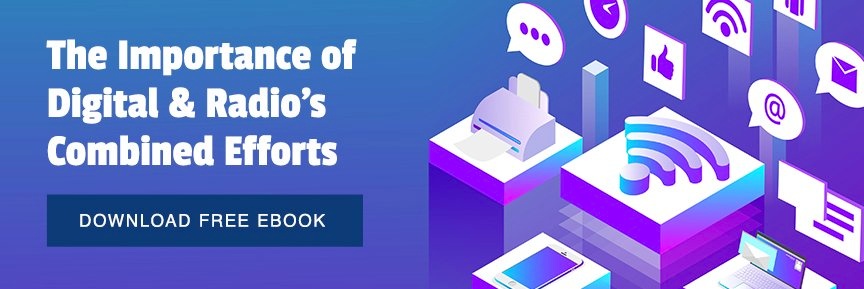Designing an ad campaign means making tough decisions about where, when, and how to invest your company's time and money. One veritable truth is that ad campaigns that only cover the internet or only cover print or digital media are not as effective as campaigns that integrate local radio ads into the budget.
Radio is popular among all ages. Nielsen ratings show that 92% of adults listen to radio compared to only 87% of adults who listen to TV. Even fewer search the internet on their smartphones.
The following describes how radio ads can spark an ad campaign towards the very groups you want to target.
Local Radio Ads are Geo-targeted
Local radio shows are, naturally, local. Shows have a smaller listener radius and reach audiences in a particular geographic area. Digital geo-targeting depends on IP addresses, which can be spoofed. For businesses looking for local customers, the only surefire way to reach the surrounding populous is radio.
Local Radio Ads Reach Unique Audiences
Radio ads make it possible to reach listeners that are not predisposed to search the internet or use social media. Radio has the largest reach with listeners in the age group ages 35-54 (93%).
In contrast, desktop ads only reach 50% of adults 18 and over, while ads on tablets reach just 37% of those adults. The lesson here is if you need to reach people 35 and older, radio ads are the way to go. The same is true for younger audiences that are not exposed to the internet enough to see many ads.
Local Ads Work with Integrated Advertising
A few years ago, market researchers found that a combination of radio and digital ads increased revenue and sales. Specifically, the integration of radio and digital ads increased sales an average of 23% while digital ads alone boosted sales only 14%.
An example of successful integrated radio marketing is the Clear H20 Tackle campaign. Clear H20 Tackle sells fishing and hunting gear to serious outdoor sportsmen. Clear H20 targeted their audience on the assumption that people who listen to country music are likely to be interested in fishing and hunting.
The campaign included on-air promotions during the morning radio show as well as Facebook and email campaigns. The radio promotions also included a contest for listeners. The ads featured both the client and the local DJ talking about the business.
The contest received 221 entries that shared fishing photos. Of the 221 entries, 116 asked to receive future emails from the company. Of the 221 entries, 130 (almost half) had never before heard of Clear H20 Tackle. This increase in brand recognition came at a relatively low cost thanks to integrating digital with local radio ads.
Local Ads Appeal to Loyal Listeners
Radio shows are known for their loyal listeners. Listeners love both the shows and the show’s hosts. They trust what the host has to say about the businesses they promote. This creates a prime opportunity for on-air endorsements and sponsorships.
Local Ads Give Exposure While Driving
When staying at home watching television, audiences may ignore ads in favor of browsing on their phone.
On the other hand, many radio listeners hear radio ads while they are driving a car. These listeners cannot (safely) distract themselves with their phones or other screens. Instead, they are captivated by what they hear. In an era of distractions, that is an important benefit.
Also, when it comes to foot traffic, the best time to reach a prospect is when they are mobile. Local radio ads, by definition, will advertise areas that are close to the prospect.
The Way Forward
Including local radio in your next ad campaign is critical to reaching a targeted audience segment, increasing sales, and bringing in more business revenue. Improving your return on your investment (ROI) is a critical feature of any ad campaign, and radio is perfectly positioned to help you do just that.

